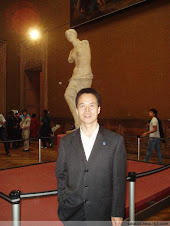The first book of the series three books on environmental aesthetics by Cheng Xiangzhan
A Study of Environmental Aesthetics in China
Contents
Introduction
Chapter 1
Theories of Models of Environmental Aesthetic Appreciation: How to Appreciate Environments Aesthetically
1.1 Facing nature with metaphysical mysterious heart
1.2 Responding to scenery with Tao, tasting image with purified heart
1.3 Enlightening mysteriously
1.4 Viewing up and down
1.5 Taking natural scenery as bosom friend
1.6 Wandering peacefully and slowly
1.7 Watching silently, listening to the sound far away
1.8 Taking flowing water as weaved silk, taking sound as playing music
1.9 Proper place, waiting for the proper person to live in
1.10 The beautiful can not reveal itself, it is revealed by proper person
1.11 Concentrating one’s attention to unite with myriad things as a whole
1.12 Observing mountain and river by uniting with them
Chapter 2
Theories of Environmental Aesthetic Objects: What to Appreciate in Environments
2.1 The mysterious and elegant spirit of natural environment
2.2 The flavor and essence of natural environment
Chapter 3
Theories of Environmental Aesthetic Values: Why Do We Need to Appreciate Environments Aesthetically
3.1 Getting the most enjoyable experience of seeing and hearing
3.2 Comforting one’s spirit freely
3.3 Letting heart wander about freely
3.4 Fitting one’s nature
3.5 Returning to nature
3.6 A man of noble character must have a paradise to relax
3.7 Observing the mysterious function of natural creating
3.8 Recovering from illness by wandering in natural environment
3.9 Fostering one’s nature so as to follow Nature
Chapter 4
Theories of Environmental Beautifying and Design: How to Beautify and Design Environments
4.1 Imitating the images that cleave to Heaven and following the forms manifested on Earth
4.1.1 The origin of city and city design
4.1.2 A summary of the design principle of imitating the images that cleave to Heaven and following the forms manifested on Earth
4.1.3 The aesthetic meaning and significance of imitating the images that cleave to Heaven and following the forms manifested on Earth
4.1.4 The aesthetic characters of ancient Chinese cities designed according to the principle of imitating the images that cleave to Heaven and following the forms manifested on Earth
4.2 Keeping environment’s naturalness
4.3 Widening view, deepening view
4.4 Designing winding path
4.5 Concealing and disclosing
4.6 Assembling views in one propitious site
4.7 Borrowing scenery
4.8 Design with Nature
4.9 Gardening according to the principles in composing poetry and essay
4.10 Suitable to get joy of farming and reading
Reference
Postscript
Wednesday, October 15, 2008
Subscribe to:
Post Comments (Atom)


No comments:
Post a Comment